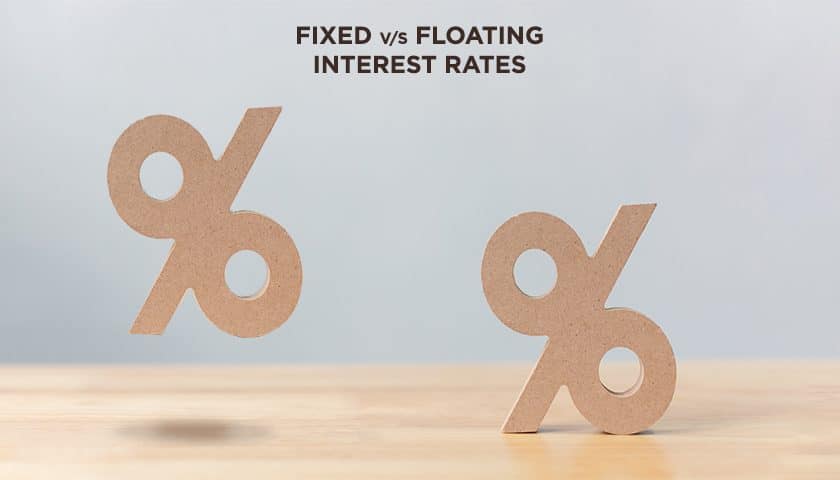Making choices are part and parcel of life. The decision to buy a home is a big one and comes loaded with choices. One of them is deciding the right type of interest rate on the home loan. And that’s not easy.
Every new homebuyer faces the dilemma of choosing between fixed and floating interest rates. Which one gives you the most value? Which one is most suitable for your lifestyle?
Let’s find out through our handy guide on everything you need to know about fixed and floating interest rates before you go in for your home loan.
What is a fixed interest rate?
As the name indicates, it is an interest rate that is fixed at the time of taking the loan for a specific duration. Different lenders have various options for the period for which the interest rate is fixed, and it can range anywhere between 8.5% to as much as 12.5% differing between banks and NBFCs. The rate depends on your choice of a specified tenure of 5-10 years or the full duration of the loan.
What are its advantages?
Fixed interest rate means that your EMIs will remain exactly the same for the duration of the loan. This offers a sense of clarity and allows you to calculate your expenses and plan for the future.
It saves you from market fluctuations and works to your advantage when interest rates suddenly register steep increases. Thus it gives you financial security at all times.
Read More: Download Our Ultimate Home Loan eBook here.
What are its disadvantages?
The biggest drawback of choosing a fixed interest rate is that it will turn out to be the more expensive option given the high interest rates.
If the market is experiencing downtime and interest rates are diving, you won’t benefit from it.
What is a floating interest rate?
A floating interest rate is dynamic and changes in sync with the market fluctuations. Floating interest rates were linked to the Marginal Cost of Funds Based Lending Rate (MCLR), which is an internal system within banks to calculate the interest rate at which they should lend. But from April 2019, floating interest rates will be de-linked from MCLR and instead will now depend on external benchmarks making it a more transparent process.
Floating loans undergo a periodic reset, and the tenure of the loan gets adjusted accordingly as well to avoid changes to your EMI amount. But you can make changes to your EMI if that is comfortable for you and request your lender to revise as per your requirements. Currently, floating interest rates range from 8.5% to 10.2%.
What are its advantages?
Floating interest rates are marginally cheaper than fixed interest rates and continue to remain so at all times.
You will get the biggest benefit of a downturn in the market if you are on a floating interest rate plan as you will end up paying much lesser than your fixed rate counterparts.
What are its disadvantages?
The unsteady nature of floating interest rates makes long-term financial planning a big challenge.
You will be at a disadvantage if the market rates go up compared to those who have opted for fixed interest rates.
Semi-fixed interest rates
Still confused? How about combining the two types of interest rates and going for a semi-fixed plan? In this scenario, your interest rate will remain fixed for a specified duration and convert to floating after that. This might be a good option if you want some stability at the beginning.
Currently, floating interest rates are seeing a rise in popularity with experts predicting a steady decline in interest rates in the coming years. However, it is a risk you have to be prepared for, and your eventual choice depends on the extent of your need for financial security.






